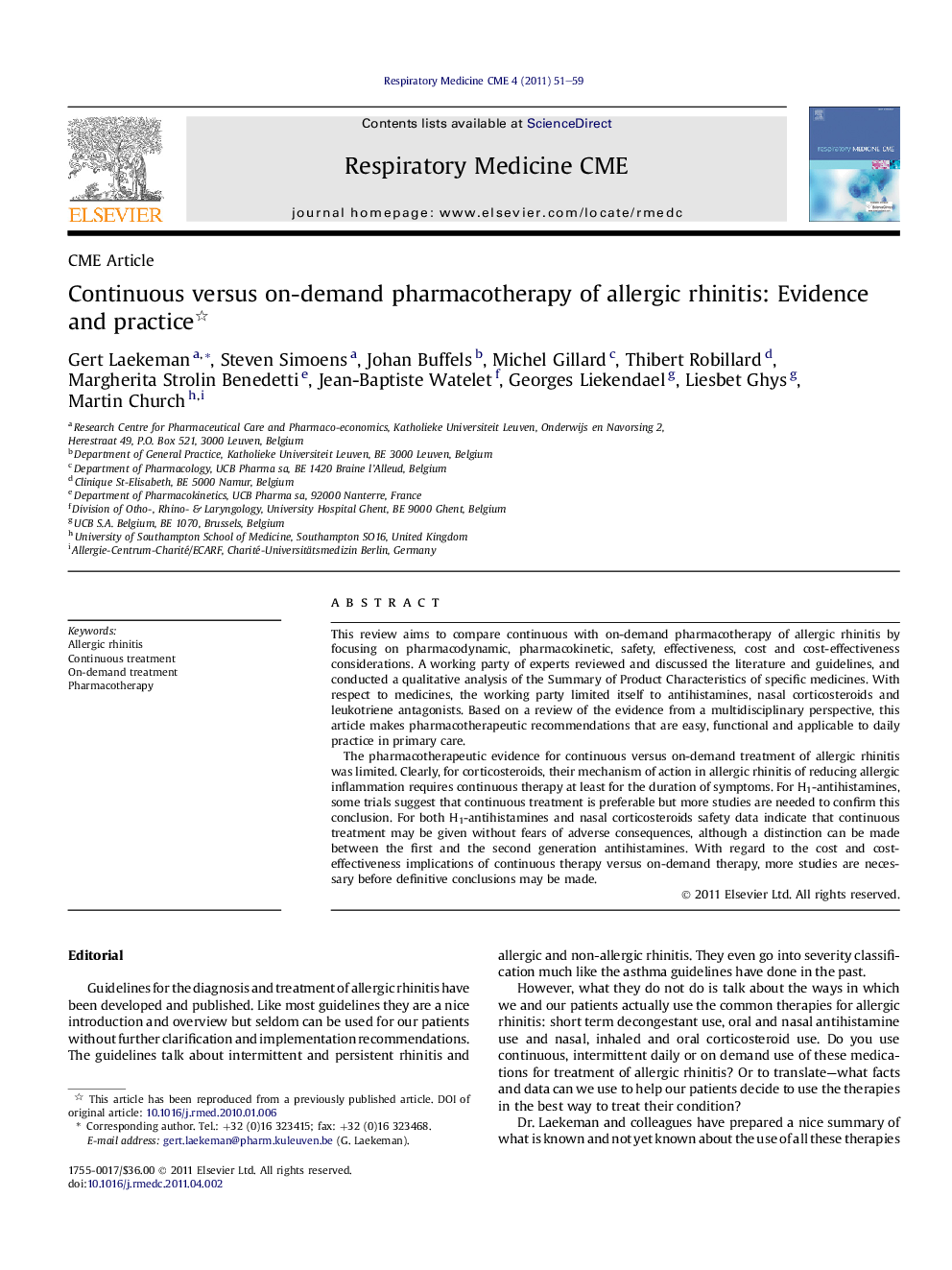| Article ID | Journal | Published Year | Pages | File Type |
|---|---|---|---|---|
| 4212958 | Respiratory Medicine CME | 2011 | 9 Pages |
This review aims to compare continuous with on-demand pharmacotherapy of allergic rhinitis by focusing on pharmacodynamic, pharmacokinetic, safety, effectiveness, cost and cost-effectiveness considerations. A working party of experts reviewed and discussed the literature and guidelines, and conducted a qualitative analysis of the Summary of Product Characteristics of specific medicines. With respect to medicines, the working party limited itself to antihistamines, nasal corticosteroids and leukotriene antagonists. Based on a review of the evidence from a multidisciplinary perspective, this article makes pharmacotherapeutic recommendations that are easy, functional and applicable to daily practice in primary care.The pharmacotherapeutic evidence for continuous versus on-demand treatment of allergic rhinitis was limited. Clearly, for corticosteroids, their mechanism of action in allergic rhinitis of reducing allergic inflammation requires continuous therapy at least for the duration of symptoms. For H1-antihistamines, some trials suggest that continuous treatment is preferable but more studies are needed to confirm this conclusion. For both H1-antihistamines and nasal corticosteroids safety data indicate that continuous treatment may be given without fears of adverse consequences, although a distinction can be made between the first and the second generation antihistamines. With regard to the cost and cost-effectiveness implications of continuous therapy versus on-demand therapy, more studies are necessary before definitive conclusions may be made.
